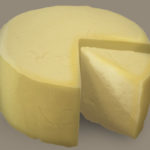Momentum grows for inclusion of Welsh food or drink emoji ahead of St David’s Day

Food & Drink Wales is calling upon the Unicode Consortium, the global organisation responsible for regulating the international emoji portfolio, known as the Unicode Standard, for the inclusion of a Welsh food or drink emoji.
Food & Drink Wales, the Welsh Government division responsible for the development and promotion of the Welsh food and drink industry, is hoping that the presence of a Welsh food or drink emoji will work to boost awareness about Wales’ acclaimed culinary culture and booming food and drink sector.
In January the sector announced a record annual turnover figure of £7.47bn, surpassing the Welsh Government’s target of £7bn by 2020, and representing sector growth of 30% since 2014.
The move comes off the back of the long campaigned for addition of the Welsh flag to the emoji keyboard in 2017.
The Unicode Consortium releases less than one hundred new emojis every year based on submissions from individuals and organisations who present their case with evidence for why each one is essential. Such a small number of new releases means competition is fierce and the vast majority of applications are rejected.
And based on the new releases seen in recent years it’s clear that food and drink emojis have become one of the greatest influences in the Unicode Standard.
In 2019 Emoji 12.0 saw the release of 59 distinct new emojis, with new food and drink emojis including a garlic bulb, onion, waffle, butter and an oyster, along with more regionally specific inclusions including Mate, a traditional South American caffeine-rich infused drink and Falafel, a Middle Eastern chickpea pattie.
They joined a line-up of Unicode food and drink emojis that has become increasingly globalised in recent years to include the addition of ingredients or dishes associated with specific cultures and nationalities. Since 2010 emojis including sushi, burrito, curry, pizza, noodles and sake have all joined the line-up, with key moments including the arrival of the taco in 2015, lobbied for by US fast food giant Taco Bell, and the much-hyped avocado in 2016.
Food & Drink Wales will be submitting a number of potential emoji options to the Unicode Consortium that have a direct affiliation with Wales, with designs for consideration including Welsh lamb, Welsh cake, leek, Bara Brith and Caerphilly cheese.
And the organisation is asking for the public’s help in streamlining the final shortlist, with polls running on the Food & Drink Wales Twitter channel, with feedback welcome.
Here’s just some of the dishes that Wales is best known for:





Welsh lamb
Widely regarded as the best in the world, Welsh lamb boasts Protected Geographical Indication (PGI) status, the highly sought after marque which guarantees that you are buying a premium quality product. The result of centuries of traditional husbandry methods, generations of breeding expertise, and an abundance of natural grazing. Welsh lamb is used in the world’s finest restaurants and is a favourite of many of the world’s leading chefs.
Welsh Cake
Welsh cakes are so synonymous with Wales that they even have Welsh in their name, Welsh cakes are a favourite with natives and tourists alike. Traditionally made with flour, butter, currants, eggs, milk, and spices such as cinnamon and nutmeg, these round little cakes are typically cooked on a bakestone and enjoyed either warm or cold.
Leek
One of Wales’ national symbols, the humble leek has long been associated with the Welsh. Origin stories abound but consensus generally lies with the tale of St David, the Patron Saint of Wales, who legend has it ordered his soldiers to wear the leek on their helmets in a battle against the pagan Saxon invaders of Britain. The battle itself is also said to have taken place in a field full of leeks.
Bara Brith
Bara Brith, essentially translating to ‘speckled bread’, is a rich fruit loaf made with tea. A true Welsh classic, it’s delicious when spread with salted butter and enjoyed with a cuppa.
Caerphilly Cheese
A hard, white, crumbly cheese originating from the town of Caerphilly in south Wales. First made in around 1830, it was a favourite with coalminers for who it made the perfect lunch on-the-go while underground. A traditional Caerphilly must be made with milk produced by Welsh farms. In 2018 Caerphilly cheese achieved acclaimed PGI status, elevating it to the ranks of Welsh lamb, Anglesey sea salt and Pembrokeshire early potatoes.
Speaking about the need for a Welsh themed food or drink emoji, Lesley Griffiths, Minister for Environment, Energy and Rural Affairs, said:
“With a food and drink landscape and culture as rich and diverse as the one we have in Wales it would be enormously gratifying to see this reflected as an emoji in the Unicode Standard in order that it may be one of the billions of emojis sent daily.”